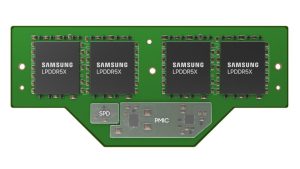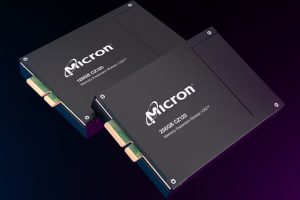 This is consistent, says the standards body, with the recently updated contents of JESD401-5B DDR5 DIMM Label and JESD318 DDR5/LPDDR5 Compression Attached Memory Module (CAMM2) Common Standard.
This is consistent, says the standards body, with the recently updated contents of JESD401-5B DDR5 DIMM Label and JESD318 DDR5/LPDDR5 Compression Attached Memory Module (CAMM2) Common Standard.
JESD406-5
The new publication documents the contents of the SPD non-volatile configuration device included on all JEDEC standard memory modules using LPDDR5/5X SDRAMs, including the CAMM2 standard designs outlined in JESD318.
Specifically, JESD406-5 specifies the contents of each SPD byte. This allows application software – including BIOSes – to determine the module capacity, speed, I/O configuration, and content revision level of the module.
JEDEC says that rounding algorithms are defined to help optimise performance even when legacy modules are plugged into new systems. Or vice versa – when new modules are plugged into legacy systems.
“The release of LPDDR5/5X SPD Contents is an important step in expanding the market for these components, including use in notebook computers,” said Mian Quddus, Chairman of the JEDEC Board of Directors.
“Combined with standards for module base specifications and labels, system designers can be assured of consistent support for incorporating LPDDR5 devices into their systems. With detailed algorithms for using the parameters in the SPDs, end users can be assured of optimal performance.”
JESD318
 It was in January the standards body published a new JESD318 Compression Attached Memory Module (CAMM2) Common Standard, defining electrical and mechanical requirements.
It was in January the standards body published a new JESD318 Compression Attached Memory Module (CAMM2) Common Standard, defining electrical and mechanical requirements.
It covers both Double Data Rate, Synchronous DRAM Compression-Attached Memory Modules (DDR5 SDRAM CAMM2s) and Low Power Double Data Rate, Synchronous DRAM Compression-Attached Memory Modules (LPDDR5/5X SDRAM CAMM2s). The former are intended for performance notebooks and mainstream desktops while the latter target a broader range of notebooks and certain server market segments.
To download published JEDEC documents, visit the JEDEC website.
Image: Samsung’s Low Power Compression Attached Memory Module (LPCAMM)
See also: JEDEC plans advanced memory modules for next-gen AI applications
 Electronics Weekly Electronics Design & Components Tech News
Electronics Weekly Electronics Design & Components Tech News

